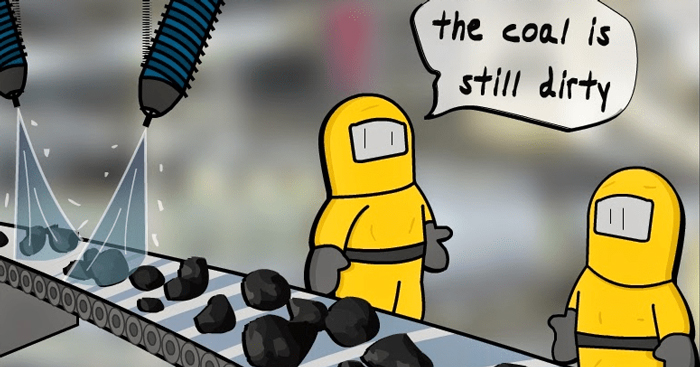This op-ed originally appeared in the print edition of the Latrobe Valley Express on 10.5.2023
Victorian Trade Minister and Treasurer Tim Pallas has recently been in Japan negotiating a deal to convert brown coal from the Latrobe Valley into so-called ‘clean hydrogen’ which relies on carbon capture and storage (CCS) technology.
However, it seems he forgot to send the memo to his State government colleagues – with Lily D’Ambrosio, Victoria’s climate action and energy minister, this week questioning the financial underpinnings of the deal – namely that the money currently put on the table by the Japanese proponent won’t cover the costs involved in the unproven carbon capture and storage facility.
“100% of that risk … sits with Victorians,” she lamented.
The $2.35 billion funding from Japan Suiso Energy, acquired through the Japanese government’s Green Innovation Fund, was intended to mark the start of the “commercial demonstration phase” of the Hydrogen Energy Supply Chain (HESC) project, which last year delivered a single tonne of liquid hydrogen to Japan through the port of Hastings.
The new phase of the HESC plan quickly brought tensions within the Andrews government to the fore – along with Lily D’Ambrosio refusing to support any new fossil fuel projects, the Premier Dan Andrews has referred to the CCS technology behind it as ‘unproven’.
Minister D’Ambrosio and Premier Andrews are right.
The proposal has serious environmental implications not just for residents of the Latrobe Valley where the coal-to-hydrogen facility would be built and Hastings where the hydrogen would be exported, but it would also significantly undermine Victoria’s ambitious emissions reduction and renewable energy targets.
Risks for the Latrobe Valley
Coal-generated hydrogen obviously requires coal. The source for this project is proposed to come from Latrobe Valley where the monumental task of rehabilitating three brown coal mines remains the focus for the next few years.
For this project to become a reality it would require either extending the life of AGL’s Loy Yang mine – the only mine with an expansion approval that could sustain a supply of coal in the medium term – or a new coal mine will need to be dug.
The implications for Hastings and Western Port if this project advances are also disturbing. Local groups are already raising concerns about yet another commercial export terminal proposal for Western Port which is also the preferred location for importing renewable energy infrastructure.
And that isn’t to mention the long pipelines required to pipe coal-generated hydrogen to Westernport and to the offshore CCS site in a decommissioned gas pocket in Bass Strait.
Make no mistake: what we are being sold here is a fossil fuel industry grift, and Victorians need to know what Pallas’ reasoning is.
Carbon capture and storage – banking on an unproven technology
Carbon capture and storage is touted as a miracle solution that can prolong the life of fossil fuel projects or justify new ones by reducing emissions – but all the evidence we have shows that CCS will never be a zero-emissions solution.
It involves capturing, transporting and storing greenhouse gas emissions (in this case from a commercial coal-to-hydrogen manufacturing facility) by injecting the captured greenhouse gases back into the ground, requiring massive new infrastructure and pipelines
Previous projects such as Chevron’s Gorgon gas plant in WA that have attempted to utilise CCS technology have been an epic – and very expensive – failure. Even when carbon can actually be captured from a fossil-fuel facility, and transported safely to the CCS site offshore, keeping the carbon in place so it doesn’t escape again is virtually impossible.
In Australia, the coal and gas industry is jumping on the theory of CCS as a justification to keep its polluting projects going past their use-by dates, but as this report points out, CCS is likely to be six times more expensive than energy produced by renewable energy backed by storage – so why would we be pursuing it?
But what about ‘clean hydrogen’?
For the past few years, ‘clean hydrogen’ has been seized on by the fossil fuel industry that knows its days are numbered as a last ditch effort to keep drilling and expand existing mining infrastructure.
According to a recent ANU study headed by Dr Fiona Beck, turning fossil fuels into hydrogen is always going to be dirtier than using renewable energy.

Dr Beck and her colleagues did a comparative study of the amount of carbon released using the same method as is being proposed for the Latrobe Valley and concluded that creating hydrogen from brown coal would release 40kg of CO2 for each unit of energy produced – way too much to be considered low-carbon or meet Victoria’s current emissions targets.
No wonder Minister D’Ambrosio is now speaking out against this proposal – if it goes ahead (which now seems unlikely) it would pose serious risks to Victoria’s environment while undermining the Victorian government’s own emissions reduction goals.